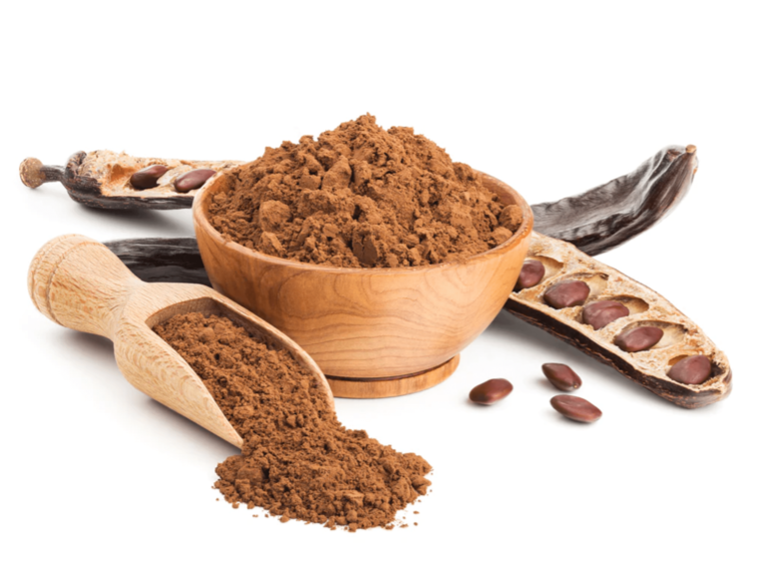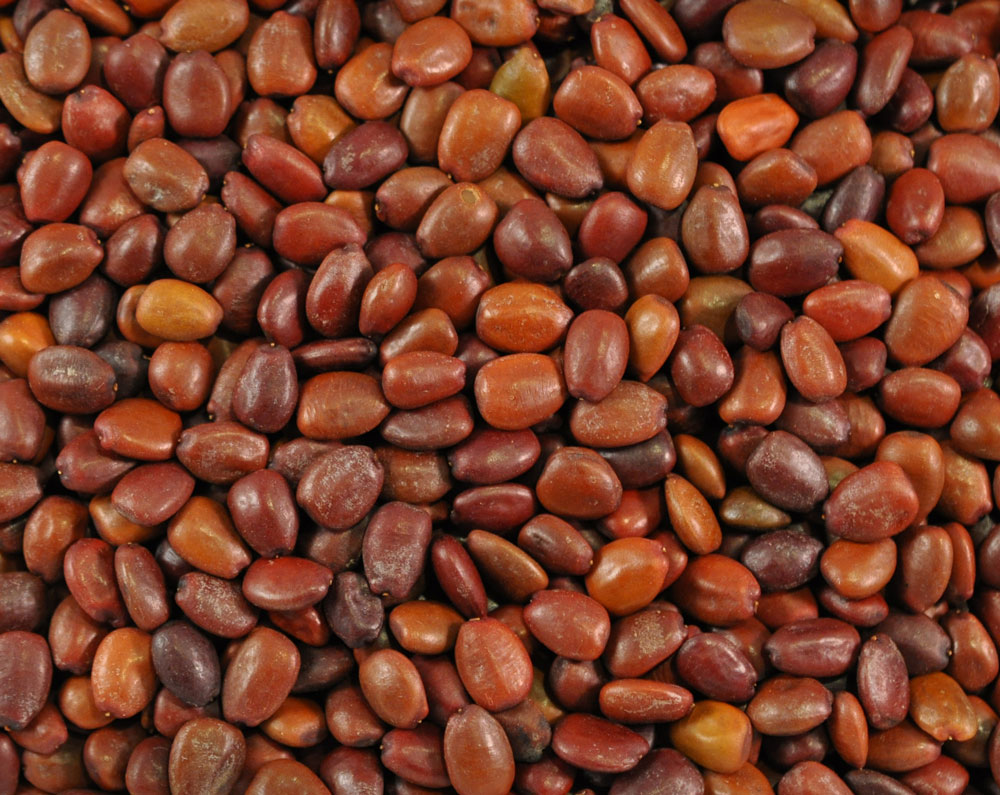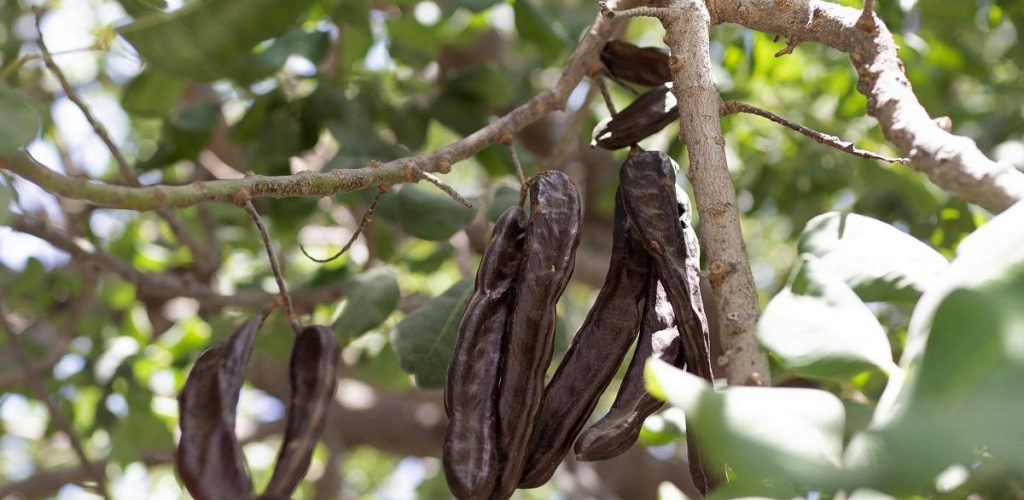
Carob
Carob, also known as goat horn, is a legume that comes from the tree of the same name. The seeds are high in natural sugars, protein and minerals (calcium, silica, iron and phosphorus).
Carob fruit is known for its high sugar (48-56%) and fiber content and low fat and alkaloid content.
Carob tree
The scientific name of the carob tree, Ceratonia Siliqua L. comes from the combination of the Greek word ‘Kera’ and the Latin word ‘Siliqu’. ‘Kera’ is based on the keratomorphic shape of the carob fruit, while ‘Siliqua’ is based on the hardness and shape of the carob fruit. The carob tree grows predominantly in regions of many Mediterranean countries with mild and dry climatic conditions.
The world’s largest carob producing countries are Spain, Italy, Portugal, Morocco, Turkey, Greece, Cyprus and Lebanon.
Carob Species Growing in Cyprus
There are three main varieties of carob in Cyprus: “Tylliria”, “Koundourka” ve “Koumbota”.
Tylliria
Origin: Cyprus
Growing Area: It is widely grown throughout the island, it is the main variety grown in Cyprus.
Tree: It has a strong and upright growth habit, red colored shoots and large leaves.
Fruits: 15-17 cm long, slightly curved, reddish brown, 2-2.5 cm wide, 1-1.2 cm thick. The fleshy part contains 51% sugar.
Koundourka
Origin: Cyprus
Habitat: Karpaz peninsula of Cyprus
Tree: Medium sized, with a downward drooping growth habit.
Fruits: Dark brown, generally flat and relatively short (about 13 cm). The fleshy part contains 50% sugar.
Koumbota
Origin: Cyprus
Growing Area: Karpaz Peninsula of Cyprus
Fruits: It is dark brown and long (about 20 cm) and curves towards the narrow side. The side towards the direction the seeds are pointing is thicker than the other side. The fleshy part contains 53% sugar.
History of Carob in Cyprus
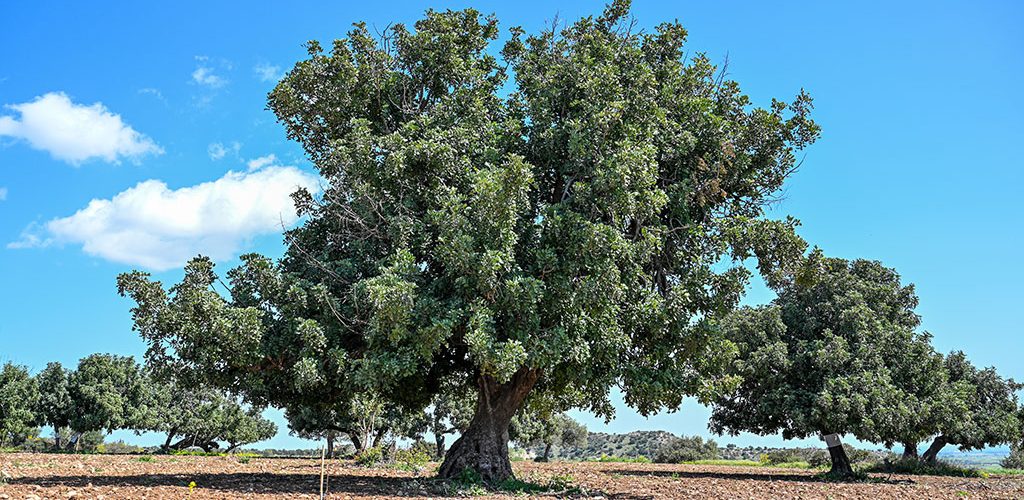
Carob from the Middle Ages to the Present
The first information on carob exports from Cyprus is based on the accounts of medieval travelers. In the beginning, ships calling at Cyprus carried only passengers, but from 1480 onwards, they started to take cotton, salt and carob products from Cyprus back home. During this period, Cypriot products were marketed abroad by Venetian and Genoese merchants.
Carob during the Ottoman Period in Cyprus
Carob exports started during the Venetian period and continued during the Ottoman period. During the Ottoman adminstration in the 16. century The Ottoman administration imposed low prices on products such as cotton, silk, wine, olive oil, grain and carob in the 16th century, causing Venetian, British, French and Dutch merchants to show interest in Cyprus products.
During the Ottoman period, the person who grafted a wild carob (or olive) tree on any registered land, took care of it and collected the first product was considered the legal owner of that tree. If the owner of the land refused to pay for the grafting and maintenance of the tree, ownership of the tree would lose priority. In such cases, the person who was recognized as the legal owner of the tree would carve his or her name on the trunk and the fruits of the tree would be given to him or her by the state.
(Source: Address Magazine, Journey to the Past Cyprus’ Black Gold: Harnıp, January 1, 2011, Author: Tuncer Bağışkan, Archaeologist)

Carob Warehouses Built During the British Period:
The old carob granaries by the sea were built to withstand the slopes. Their sloping roofs are supported by arches or stone or wooden columns. Carobs brought by animals or carts were unloaded through the doors at the back of the warehouse, filled into bags and made ready for export. Large foreign-flagged cargo ships used to anchor in deep waters because they could not dock in ports. Bags full of carob were carried to ships by boats that approached them. This type of transportation continued from the Middle Ages until the Ottoman period and the British era.
(Source: Address Magazine, Journey to the Past Cyprus’ Black Gold: Harnıp, January 1, 2011, Author: Tuncer Bağışkan, Archaeologist)
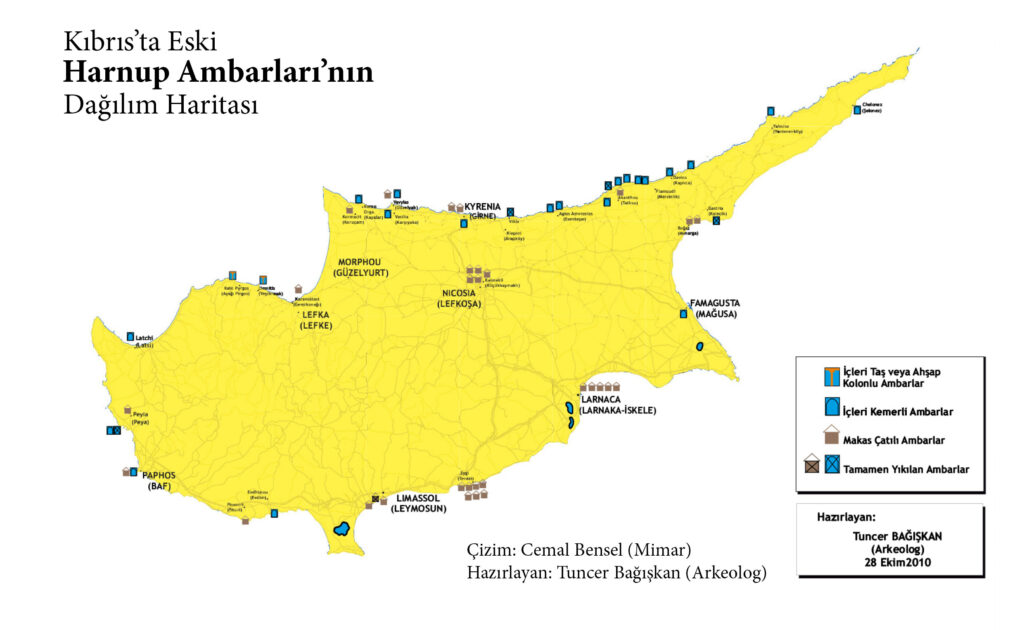
Carob Exports from Kyrenia Port:
Ioannis Evangelidis from Kyrenia (1817-1897), In the early part of the century, he marched from Karpaz to Kormacit, where he suggested that the villagers plant carob and sell their produce to him.
Later, Evangelidis’ son-in-law, Christodoulos Severis, expanded the business, building ships and exporting carob for the first time to Symirina, formerly known as İzmir.
After the death of Christodoulos Severis in 1901, his son Demosthenis Severis continued to export carob. In addition to the existing warehouses, he built new carob warehouses and piers between the Dome Hotel and Kordon Boyu for ships to anchor on the beach. Between 1917 and 1928, bags of carob were loaded onto dinghies from Kyrenia harbor and transported to large tonnage merchant ships anchored in the deep waters across the moon-shaped harbor.
(Source: Address Magazine, Journey to the Past Cyprus’ Black Gold: Harnıp, January 1, 2011, Author: Tuncer Bağışkan, Archaeologist)
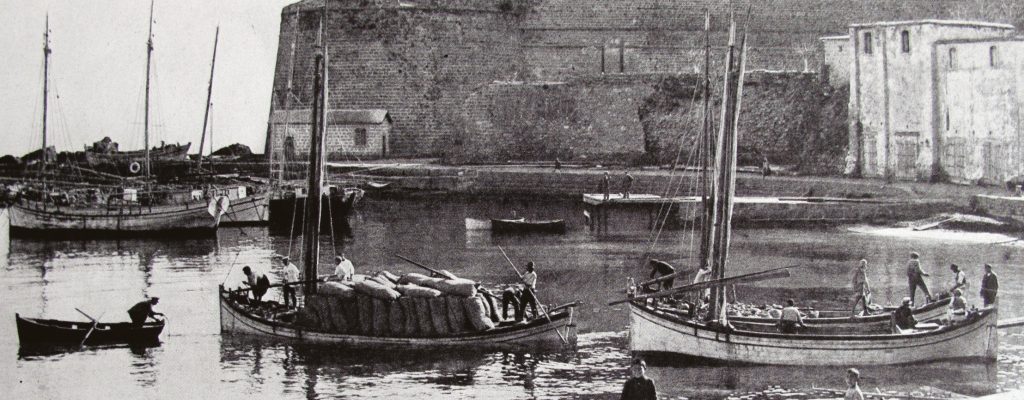
Carob and health
Many studies show the positive effect of carob and carob products on human health. The insoluble pulp, polyphenols and tannins contained in carob have positive health effects.
It also benefits cardiovascular health with its antioxidant properties. In a study on regular consumption of carob flour when blood cholesterol levels were above normal, positive results were obtained on blood cholesterol levels and LDL cholesterol (bad cholesterol). Studies also show that it can be used preventively and therapeutically in people at risk of cardiovascular disease. Since it helps to lower LDL cholesterol and total cholesterol, it reduces hyperlipidemia, cleanses the blood and reduces the risk of vascular occlusion.
Rich in potassium, calcium, sodium, magnesium and iron minerals, carob has a high total fiber content. In addition to its soluble and insoluble pulp content, it is a good source of calcium and is especially important for women and children. Carob, which provides precautions against osteoporosis (osteoporosis) due to the loss of calcium in women’s bones at an advanced age, also helps to fill calcium stores in the bone development of children.
The insoluble pulp in its content provides positive effects on the intestinal and digestive system. It helps to move nutrients through the intestine by retaining water in the body. Because it has an indigestible property, it acts as a broom of the intestines, softens the stool and adds volume. Thus, it prevents constipation.
Carob contains a significant amount of condensed tannins. These water-soluble polyphenols have anticarcinogenic and antimutagenic properties that can help fight cancer and other serious diseases.
Carob is also used in cough treatment with its expectorant properties. It cleanses the lungs and works to reduce the damage caused by smoking. It is good for allergic diseases, asthma and bronchitis.
Carob, a food with a high sugar content, is in the class of foods with a low glycemic index due to the high amount of water-insoluble dietary fiber it contains. For this reason, people with diabetes and insulin resistance can consume it by providing portion control.
